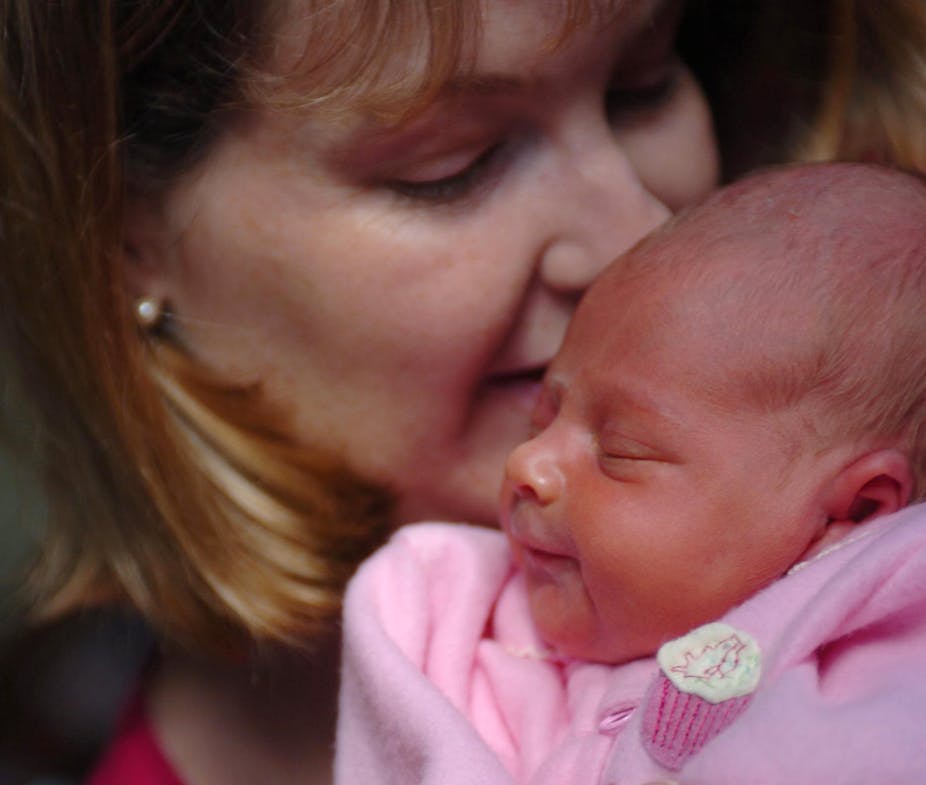How we are born, who supports mothers and the quality of the care provided during birth are vital to good public health and personal well being. But all is not well in modern birthing in spite of the advances of modern medicine.
In the United Kingdom, health policies aim to keep childbirth normal or natural and dynamic, while in the United States, Childbirth Connection seeks to “Listen to Mothers” and has critically reviewed the problems in the system.
In Australia, a national Review of Maternity Services (MSR) in 2009-10 generated heated public debate. It spawned critiques of the medical control of birth and the self-interest of privately practising obstetricians.
Its outcomes remain hotly contested, particularly over women’s access midwives and home birthing.
Much health policy now promotes strategies to improve quality and safety as being critical to good patient-centred care.
But the Maternity Services Review overlooked some problems in the culture of obstetrics.
There are many committed and caring doctors with good intentions. But as a field, obstetrics is clearly more than what individual obstetricians do.
It is their philosophy and practices that have shaped the system of modern hospitalized childbirth care.
The obstetric profession, along with state authorities, is accountable for making sure neither practitioners nor the systems of care cause harm to women and their babies.
However, my research linked several public inquiries which showed that harm was not just being caused but was covered up.
The investigations reported painful details of serious harm done by doctors to women in maternity units, including unnecessary hysterectomies, assault, and even genital mutilation.
In Drogheda, Ireland, for instance, a saga of abuse was uncovered in which unnecessary hysterectomies were performed on over 150 women since the 1970s.
In both Bega and Toowoomba, Australia, several women reported their shame and humiliation at being assaulted in intimate medical settings and frustration at “not being heard” by authorities.
Organizational conflicts meant that mothers and some babies died at the Northwick Park Hospital, London (between 10 and 12 in the early 2000s).
Similar issues meant some 100 mothers and babies suffered the same fate in the 1990s at the King Edward Memorial Hospital in Perth, Western Australia.
These reports were difficult to read. Women’s stories and struggles for justice reveal complex motivations and behaviours in an emotionally – and sexually – charged field.
Most worrying were the common patterns of denial: stories of damage to women were mostly not reported by colleagues out of professional or “tribal” loyalty.
Until the cases became public, they were seen just as “mistakes” or medical “misdemeanours”, or as caused by individual “bad apples” in the profession.
Even many anaesthetists, pathologists and midwives colluded in keeping silent about women’s tragedies.
Whatever the personal motivations producing harm to their patients, most errant obstetrician-gynaecologists operated within a protective and self-interested culture.
Individual, institutional and systemic problems are interwoven. Viewing childbirth care as a field full of power though allows us also to see how it can be reformed.
Encouragingly, the public inquiries point to changing times: women as health care consumers used the press to agitate for these inquiries and have lobbied for wider reform.
Midwives have also been speaking up about problems in the system.
Some obstetricians, too, are committed to the reform of professional practice. They promote greater use of evidence-based care and better accountability.
But we need to go even further.
Obstetric undergraduate and postgraduate education also needs reform. More critical reflection on the profession’s gendered and racialized power is necessary, and greater awareness of public health and social issues.
Professional bodies like medical Royal Colleges should also be expected, like contemporary Australian football clubs, to develop mechanisms for critical self-examination of attitudes toward women.
Similarly, doctors need to engage seriously with midwives’ concerns about policies pushing “inter-professional collaboration”.
Too often, these seem to be on medical terms and experienced as continued domination rather than an equal, respectful relationship.
High quality obstetric care remains essential for women with complex medical problems (as well as midwifery and social work input). It should be effectively supported by public funds but obstetricians are accountable for how they use them.
As the World Health Organization’s Forteleza 1985 statement reminds us, “Birth is not an illness”. Quality and safety in maternity care should not be equated with providing obstetric care.
Women deserve real choice and autonomy in childbirth. Improving care requires more than good hospital incident-reporting systems and support for staff to report medical errors. These are valuable but not enough.
Cultural change in maternity care institutions and health professions, and in the broader society’s views of childbirth care, is essential if we are to keep mothers and babies safe from harm.

